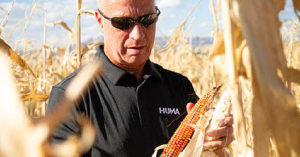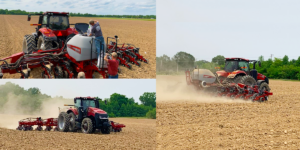“They haven’t been farming it as long,” was the response my western Illinois-based Grandpa would offer when confronted with news of success stories coming from the west (a region he defined as across the Mississippi River, less than 50-miles from his farm). I’ve long held a similar belief when it comes to the adoption of non-traditional crop inputs, especially in South America. Because unlike Grandpa (God bless him), Brazilian farmers are more open to new ways of thinking. Take biopesticides.
According to recent data from the EPA, there are 390 biopesticides registered in the USA. Meanwhile, Brazil has 443 registered biopesticides. And usage is growing at a rate 2x that of the USA, increasing by more than 400% during the past 9 years. What’s most eye-raising is where biopesticides are applied in Brazil: the majority is going on row-crops. Over 70% of their biopesticide usage goes to treating nematodes, primarily in soybeans and sugar cane, with corn representing a growing opportunity. Contrast that with the USA, where the bulk of these products are used on specialty crops, with only 10% going on our vast row-crop acreage. Brazil’s use of biopesticides may be coming more from a place of efficacy and performance vs. simply going green. By applying 720,000 tons annually, Brazilian farmers hold the distinction of being the world’s leader in pesticide use, applying more than the US and China combined. On a per acre basis, Brazil applies nearly 10 pounds of pesticide per acre, vs. about 2.5 pounds in the US. An incentive-laden greener approach to farming should drive greater acceptance for more natural pest control methods in the US, fueled by sustainability goals of food companies and CI scores from biofuels. And as more farmers continue to experience success with biostimulants, interest in biopesticides should also grow.
Brazil is set to record its second-largest corn harvest in history, reaping 4.5 billion bushels of their milho. That’s still a 12% decline from last year, as flooding and weather-related issues impacted the crop. They’re also expected to relinquish their grip on world’s largest corn exporter, as the USA is poised to regain that title in 2024 after losing it last year. Expect this honor to ping-pong between these two producers for the foreseeable future.
#Harvest24 begins for me today. I’ll be harvesting my corn. In the South, the concept of drying high moisture corn is a foreign one. Elevators typically won’t accept corn above 16% moisture (15.5% is the standard level). Anything you deliver to the elevator below 15.5% is just lost weight. So I need to time harvest accordingly. When I tested on Thursday, the corn was 19%, so today should be optimum.
Last week I appeared on the Harvest USA Report, discussing soil health. Harvest USA Report is a farm broadcasting network aired by 18 radio stations across the Southern and Northern Plains. You can check out the interviews here.
College football officially kicked off this past weekend. The marquee matchup between Notre Dame and Texas A&M was played at historic Kyle Field in College Station, Texas. While the game was entertaining, and the crowd was raucous, what always stands out in Aggieland is the playing field. I’ve visited that stadium multiple times while working with my friends at Capital Farm Credit (I’ve stood on the sidelines during games, which is an incredible experience!). The turf at Texas A&M’s Kyle Field is all natural, grown from a special variety of Bermudagrass. So how does it look so pristine? For starters, there is no layer of topsoil; the grass is actually grown in about a foot of sand. That is to provide optimum drainage and prevent water from puddling during rains. Immediately after each game, the turf is mowed and compacted to replace any divots and fed to reduce stress. The turf is watered nearly every day, and every other day it is fertilized and treated for insects and fungus. Organic products are used as much as possible.

Related Posts

This Week in Ag #20
Wheat harvest is well underway throughout the country. Each morning, the harvest process begins with equipment maintenance. Most farmers and custom cutters will park their fleet in a row, or in close proximity, so they can readily perform daily service. This involves the grease gun. Combines have hundreds of moving parts. Some of the most key

This Week in Ag #50
When explaining the carbon offset market, many of you have heard me give the example of companies and individuals purchasing carbon credits to “offset” their carbon footprints. By nature of what they do, some businesses such as airlines have no choice, as they’ll otherwise never come close to meeting self-imposed carbon footprint targets.

This Week in Ag #7
For most farmers, April means the start of planting season. It’s a lot like opening day for a baseball team: heavy planning, great excitement and anticipation, lots of optimism and more than a few watch outs. So when exactly do farmers start planting? While they all have a plan, Mother Nature usually has the final say. There is

